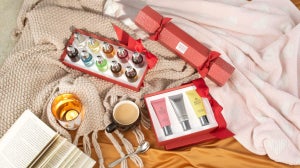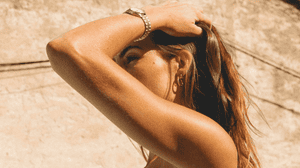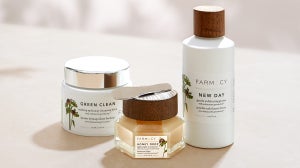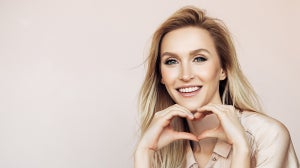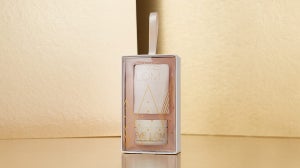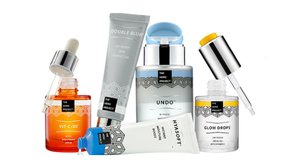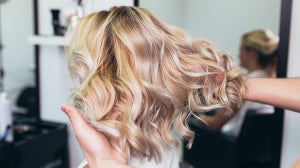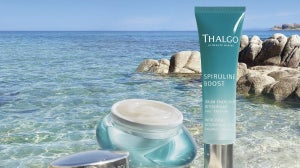
Ever wonder why some makeup shades make you feel like a total knockout, while others leave you looking a little dull?
We’ve all been there. The good news? It’s not just in your head; it’s all to do with how certain shades complement your complexion.
With that in mind, we’ll guide you through how to do your own colour analysis, so you can choose products that enhance your features.
What is a Colour Analysis?
Colour analysis is all about identifying the shades that enhance your natural features and helps to ensure your clothing, makeup, and accessories all harmonise together, allowing you to look and feel fabulous!
One of the most widely recognised methods for personal colour analysis is the ‘twelve-season’ colour system, which takes the traditional four-season model—spring, summer, autumn, and winter—and elevates it a little.
Instead of stopping at those classic seasonal categories, this approach breaks each one down into three distinct sub-seasons, each with its own signature palette that is more tailored to your features. For instance, spring is broken down into ‘bright spring’, ‘light spring’, and ‘true spring’.
But before we dive into the details, we’ve highlighted the basics of how to perform a colour analysis at home.
How to Do a Colour Analysis on Yourself
When doing a colour analysis yourself, you’ll want to focus on three things: your undertones (warm, neutral, or cool), your value (light or dark), and your chroma (bright or muted).
These will help determine what season you belong to, and don’t worry if it seems complicated, we’ll guide you through each step with ease!
What are My Skin Undertones
Let’s start with undertones, those subtle shades beneath your skin’s surface. These will play a role in how colours look on you.
If you’ve got warm undertones, you might notice hints of yellow or gold in your skin, while cool undertones lean more towards pink and blue hues.
If you’re not sure how to tell your undertones, look at the veins on your wrist. Green veins may indicate warm, while blue could suggest cool.
Or consider your jewellery preferences: if gold makes you glow, you’re likely warmer; if silver is your go-to, you could be cool.
Do I have Light or Dark Features?
Next up is your value, which refers to whether your features (eyes, skin, hair) are light or dark. Blonde hair and blue eyes usually fall under ‘light’, while those with darker hair and brown eyes are often ‘dark.’
Expert tip: Convert a photo of yourself to greyscale. If your features appear mostly light grey, you may have light value. If they show deeper greys and blacks, you’re likely in the dark category.
Are My Features Bright or Muted?
Now, let’s figure out your chroma - this is just a technical way of talking about the levels of contrast between your features.
If you’ve got a high contrast between your skin, hair, and eyes—you may be bright (high chroma). If they appear more blended or subtle, you might be softer and more muted (low chroma).
To do this, you may want to look at a full colour photo of yourself. Do you look vibrant, or are your tones more subtle?
Once you’ve determined this, it could be a game-changer for figuring out which colours make you look more or less radiant.
What Season Am I?
With your undertones, value, and chroma worked out, it’s time to figure out your season!
Warm + light + bright = Spring
Cool + light + muted = Summer
Warm + dark + muted = Autumn
Cool + dark + bright = Winter
So, what colours suit you best? Each season and its sub-seasons has its own unique palette. Let’s break them down:
Spring
The spring palette is all about brightness and warmth. Like a garden in bloom, this palette is vibrant and cheerful. Think true greens, oranges, with plenty of purples, and yellows.
Bright Spring: Go for bold blues, emerald green, red, and vibrant pinks.
True Spring: You’ll turn heads in golden yellow, coral, peach, and bright green.
Light Spring: Soft, light hues like peach, pink, mint green, and sky blue will suit you best.
Summer
Summers tend to have cool undertones and a more delicate, softer appearance. This palette is filled with soft pastel tones and calm, serene hues, such as lavender, dusty rose, teal, and misty blue. Shades like cool brown and grey could work well too.
Light Summer: Lavender, sapphire blue, mint greens, and grey could be your best friends.
True Summer: Soft purples, pinks, teal, and cool greys.
Soft Summer: Turquoise, teal, and soft greens will flatter you most.
Autumn
Autumns are all about warmth, depth, and richness. As you would expect, these shades are reflective of the earthy shades we see in nature - golden leaves, pumpkin patches and glowing bonfires.
Soft Autumn: Olive, mustard yellow, and warm pinks work well.
True Autumn: Creams, deep orange, and olive green may suit you best.
Dark Autumn: Go for burgundy, forest green, and warm brown tones.
Winter
People that fall within the winter category tend to have striking, contrasting features - otherwise known as a high-chroma. Winter is made up of bold, intense shades that are cool, clear, and jewel toned.
Deep Winter: Rich navy, black, dark red, and forest green.
True Winter: White, royal blue, and berry reds will flatter you the most.
Bright Winter: Pale pink, cobalt blue, emerald green, and violet should be your go-to.
Colour Draping
To pinpoint your exact sub-season, grab some different shades and do some colour draping.
It’s best to do this in natural light, with your hair tied back and no makeup. Once you have an idea of which season you are in, take various different coloured items from your wardrobe and hold them against your face. Pay attention to which shades brighten your complexion, and which shades have the opposite effect.
Once you’ve found your best matches, refer back to the sub-seasons to see where you fit.
Note: If you want to have the most professional experience, you can purchase various colour swatch kits online for a more accurate representation.
Once you’ve done the groundwork on how to do your own colour analysis, you can let your makeup and clothes do the rest of the work for you by selecting the shades that will make you shine.
Remember, though, these are simply suggestions to inspire you – you can (and should!) use whatever colours make you feel confident.
Put it into practice by checking out our guide on how to find the right red lipstick for you.


